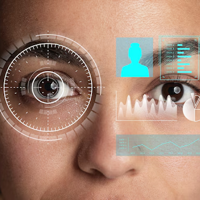Despite technological advancements pushing the limits of what’s possible, progress continues to improve the world. One area that has been particularly captivating to witness as it progressed is image recognition technologies. Across healthcare and retail, image recognition is unlocking new possibilities and enlarging the potential of this technology. These advancements are redefining human life from recognizing faces to identifying objects in photos. Let’s delve into some of the breakthroughs and how they could impact the future.
Deep Learning falls under the umbrella of Machine Learning focusing on extracting concepts and enhancing models through a data approach. It relies on networks that simulate the human brains learning process to detect patterns and identify objects, within images.
The advantages of employing Deep Learning in computer vision and image recognition are numerous. Notably, these algorithms exhibit accuracy, outperforming traditional methods in tasks like object detection, facial recognition and image categorization. Moreover, they offer scalability allowing real time applications such as video surveillance and autonomous vehicles to effectively utilize their capabilities. Furthermore the flexibility of deep learning image recognition algorithms enables them to adapt and identify objects and patterns with data making them well-suited for tasks like medical image analysis in fields, with limited data resources.
The use of learning in computer vision and image recognition brings about benefits;
Unmatched precision. Deep learning algorithms have shown performance when compared to methods, in tasks like identifying objects recognizing faces and classifying images.
Scalability. Deep learning models can be trained on datasets quickly and effectively making them ideal for real-time applications such as security systems and self driving cars.
Adaptability. Deep learning models can adjust to objects and patterns with data making them versatile for a range of applications, like medical imaging or navigation systems.
Currently, image recognition technology has made progress in accuracy and efficiency. These improvements are attributed to algorithms and access to datasets allowing modern models to identify a broader range of objects and scenes with remarkable precision. Moreover, advancements in hardware like GPUs and specialized AI chips have resulted in processing speeds enabling real-time analysis of datasets.
The impact of these enhancements spans fields; for instance, enhanced accuracy leads to dependable diagnoses and treatment suggestions. In the sector, it contributes to an understanding of customer preferences leading to personalized shopping experiences. Companies are integrating these processes into their operations bringing about transformations, across industries.
Researchers are increasingly turning to modal approaches to enhance image recognition systems’ robustness. These systems incorporate not just data but textual, auditory and sensor information as additional sources of input. By analyzing streams of information one can gain a better understanding of complex scenes and scenarios.
In driving systems image recognition technologies are combined with data, from LiDAR sensors, GPS and radar to help cars identify objects accurately predict their actions and navigate safely through environments. Similarly, in security applications, visual data needs to be integrated with inputs to enhance threat detection capabilities and ensure safety.
The significance of computer vision development services cannot be emphasized enough in light of these advancements. These services provide companies with the expertise and resources needed to leverage image recognition technologies. Whether it’s developing tailored solutions or integrating existing frameworks, providing computer vision development services allows new possibilities to emerge and foster innovation.
By partnering, with professionals companies can leverage cutting-edge techniques and resources to address their challenges. Computer vision development services empower organizations to adapt to the evolving landscape by automating tasks enhancing processes and creating engaging user experiences.
Image recognition technology has a range of applications, in the field of computer vision innovations. Here are a few examples:
1. Data Extraction. Thanks to advancements in table detection extracting data from images and documents has become much easier. The machine learning model can locate, clean and extract information without the need for any predefined templates. Simply connect the output of the Image Input tool to the input anchor of the Image Template tool.
2. Digital Asset Management (DAM). Computer Vision plays a role in digital asset management scenarios by facilitating the organization, storage and retrieval of rich media assets while managing digital rights and permissions. For instance, companies can use it to group. Identify images based on logos, faces, objects, colors, etc.
3. Image Categorization. Computer Vision enables the categorization of images into specific categories using a list of 86 predefined categories based on features present, in the image.
4. Barcode Scanning. The ability of barcode scanners to recognize UPC codes is powered by Computer Vision technology that identifies and interprets the patterns in barcode stripes.
The privacy implications of image recognition technologies are imperative as they advance. Issues such, as mishandling information, unauthorized monitoring and biased algorithms pose challenges that must be addressed directly. To tackle these issues researchers and industry experts are working on establishing frameworks, regulatory standards and privacy protection methods to minimize these risks.
Moreover, there is a growing emphasis on AI (XAI) in response to the increasing demand for transparency and accountability in AI systems. Ensuring the implementation of image recognition algorithms involves employing XAI techniques that improve the clarity and comprehensibility of decisions for end users.
In a nutshell, advanced imaging technologies have come a long way, from being a fresh idea to becoming an essential element in various modern applications showcasing its flexibility and importance in today tech driven society. As we strive to explore the boundaries of what artificial intelligence and machine learning can achieve the role of image recognition is bound to expand, introducing creative ways to understand and engage with our surroundings. Its impact is already noticeable in sectors such as manufacturing, security and automotive industries with its influence expected to grow shaping the path for technological progress and enriching our digital interactions. The evolution of image recognition reflects the nature of technology, where innovation is continual and the possibilities, for making a difference are endless.
Your browser is out of date and potentially vulnerable to security risks.We recommend switching to one of the following browsers:
